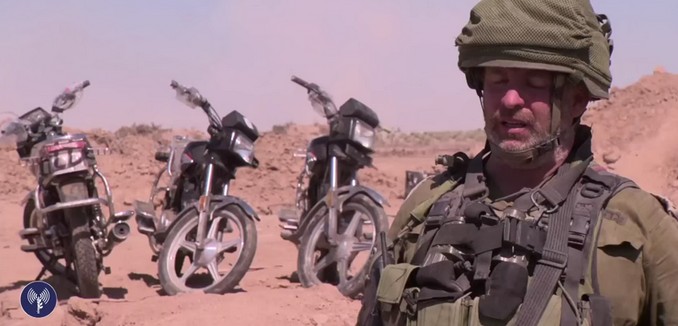Writing for Vanity Fair in an article published Tuesday, Adam Ciralsky offers a definitive account of the threats Israel faced this past summer; especially the threat of Hamas’ attack tunnels.
The threat portrayed by Ciralsky was provided by Israeli intelligence officials, who put things together “through electronic intercepts, informants, interrogations of Hamas operatives, as well as computers and satellite imagery obtained from Hamas compounds during the war.” What the intelligence officials determined was “a surprise assault in which scores of heavily armed Hamas insurgents were supposedly set to emerge from more than a dozen cross-border tunnels and proceed to kill as many Israelis as possible.” Given these threats Israel was forced to launch Operation Protective Edge to defend its population.
Ciralsky explains how Hamas built its terror tunnel infrastructure:
While seemingly low-tech, tunneling requires copious quantities of cash, cement, fuel, and rebar. Fortunately for Hamas, world events conspired to assist in this effort. During the Arab Spring, while Egyptian president Hosni Mubarak was busy fighting for his political and personal survival, Hamas built a virtual underground super-highway to the Sinai through which it managed to import an ever-more-sophisticated arsenal, including longer-range rockets, anti-tank guided missiles, and shoulder-fired surface-to-air missiles. By 2012, when Egypt elected Mohammed Morsi (the head of the Muslim Brotherhood—and a Hamas ally), Hamas was riding high. It had significantly expanded the scope and use of what has come to be known as “subterranean Gaza,” even creating a special engineering unit within its Al-Qassam Brigades to handle tunnel excavation.
In addition, Hamas created a secret commando unit, called Nukhba (the “selected ones”), and trained its men to fight and maneuver through the tunnels on foot and on small motorcycles. According to an official in the Shin Bet, which has been interrogating Hamas members who were captured during the fighting, “The offensive tunnels were top secret not only because [Hamas] had spent a fortune building them, but because they understood that once we found out about the project, there would be no turning back.” Hamas detainees have told their Israeli interrogators that they received $300 a month for excavation work and that there were two tiers of laborers. The master tunnelers were supposedly told where in Israel proper their excavation work would end up; such knowledge was not shared with the work-for-hire diggers. As for the Nukhba fighters, the Shin Bet official tells Vanity Fair, “They were an elite force . . . [trained] to execute strategic terrorist attacks. . . . [For the eventual operation, they would be] heavily armed: R.P.G.s, Kalashnikovs, M-16s, hand grenades, and night-vision equipment.” To maximize the element of surprise, they would wear—as can be seen from their own videos—I.D.F. uniforms, including mitznefet, the distinctive helmet covers worn by Israeli soldiers.
Hamas, according to Ciralsky’s reporting, was stymied by Iron Dome during Operation Pillar of Defense in 2012 and “needed a new way to terrorize Israel.” Ciralsky quotes IDF spokesman Lt. Col. Peter Lerner about Hamas’ plan:
“Hamas had a plan,” says Lt. Col. Lerner, summarizing on the record what six senior intelligence officials would describe on background. “A simultaneous, coordinated, surprise attack within Israel. They planned to send 200 terrorists armed to the teeth toward civilian populations. This was going to be a coordinated attack. The concept of operations involved 14 offensive tunnels into Israel. With at least 10 men in each tunnel, they would infiltrate and inflict mass casualties.”
Ultimately, however, the kidnapping and killing of Eyal Yifrach, Gil-ad Shaar and Naftali Fraenkel set into motion events “set things in motion before Hamas had everything ready,” according to an unnamed Israeli intelligence official.
To complement his reporting on the Israeli side, Ciralsky interviewed Hamas leader Khaled Meshaal in Qatar. Mesha’al pushed back against the Israeli charge that the tunnels were built to attack Israeli civilians claiming, “if what Israeli leaders are claiming is correct—that Hamas dug those tunnels to attack the Israeli towns and kill civilians—how come Hamas hasn’t done that during the war?” But in July, a group of Hamas terrorists infiltrated Israel near two kibbutzim and the city of Sderot. They were unsuccessful because they were detected and killed before they could attack.
Meshal also admitted that the kidnapping and killing of the three students “was indeed an operation executed by a Hamas group.”
[Photo: idfnadesk / YouTube ]




